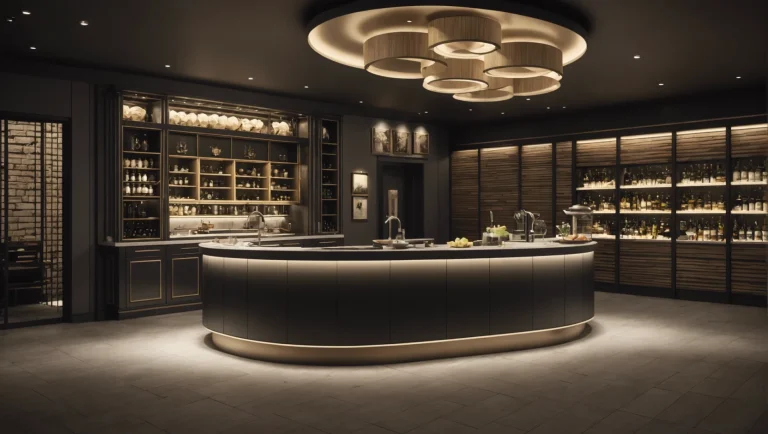Imagine a world where a tire company holds the power to make or break a chef’s career.
That’s the reality of the Michelin star system.
In this comprehensive guide, we’ll explore what a Michelin star is, how restaurants earn this prestigious award, and why it matters so much in the culinary world.
From the rigorous criteria to the life-changing impact on chefs and restaurants, we’ll dive deep into the fascinating history and influence of the Michelin Guide.
Get ready to discover the secrets behind the most coveted award in the food industry.
Metrobi drivers are rated 4.97/5
Trusted by local businesses for:
- Background-checked professionals
- Specialized in business deliveries
- Same drivers for consistency
- 4.97/5 average delivery rating
What is a MICHELIN Star? A Comprehensive Guide
The MICHELIN Guide: A Brief History
The Michelin Guide, now synonymous with culinary excellence, has humble beginnings. In 1900, the Michelin Tire Company created the guide to encourage road travel and, consequently, increase demand for their tires. The guide initially provided useful information for motorists, such as maps, tire repair instructions, and lists of hotels and gas stations. Explore the journey of securing a Michelin star and elevate your establishment into the realm of gastronomic greatness. Learn the pivotal steps for obtaining this prestigious accolade in the culinary world in 2024.
It wasn’t until 1926 that the guide began to focus on fine dining. The Michelin brothers, André and Édouard, hired anonymous inspectors to visit and review restaurants. These inspectors, known for their meticulous standards and expertise, would award stars to exceptional establishments. The ranking rating system became so popular that the Michelin Guide shifted its focus primarily to gastronomy.
Today, the Michelin Guide is published in over 30 countries and remains one of the most respected and influential culinary guides worldwide. Its anonymous inspectors continue to uphold the highest standards, ensuring that only the most deserving restaurants are awarded the coveted Michelin stars.
Michelin's Global Reach in Fine Dining:
Michelin's culinary influence spans the globe, with 3,300 restaurants across the world receiving its coveted star rating.
Michelin Star Ranking System
The Michelin Guide awards restaurants with one to three stars based on the following criteria:
One star: A very good restaurant in its category. These restaurants often use quality ingredients and provide a consistently good dining experience.
Two stars: Excellent cooking, worth a detour. Two michelin stars restaurants showcase exceptional dishes and often feature inventive techniques or unique flavor combinations. The dining experience is elevated, making it worth a special trip.
Three stars: Exceptional cuisine, worth a special journey. Three-star restaurants are the pinnacle of fine dining, offering a once-in-a-lifetime experience. The food is often innovative, pushing the boundaries of culinary arts, and the service and ambiance are impeccable.
The Impact of Michelin Stars on Restaurants
Earning a Michelin star can have a profound impact on a restaurant’s success and reputation. The recognition often leads to increased media attention, customer traffic, and revenue. Many chefs and restaurateurs have strived for years to achieve this prestigious award, as it can cement their place in the culinary world. At Metrobi, we empower these ambitious establishments by offering delivery services across more than 20 cities in the US, including an option for same-day courier services in Denver, to enhance their operational efficiency and reach.
Starry Night in the USA:
As of 2024, the U.S. has 234 restaurants with at least one coveted Michelin star.
However, the pressure to maintain Michelin star standards can also be intense. Chefs may feel compelled to continuously innovate and improve their dishes, while restaurant owners must ensure that every aspect of the dining experience remains impeccable. Some restaurants have even chosen to “return” their stars, citing the immense pressure and expectations that come with the recognition.
Notable Michelin Star Restaurants and Chefs
Throughout the years, numerous chefs and restaurants have made their mark on the culinary world by earning Michelin stars. Some notable examples include:
Joël Robuchon: The late French chef held the record for the most Michelin stars, with a total of 32 stars across his restaurants worldwide.
Alain Ducasse: Chef Alain Ducasse holds the highest number of Michelin stars in the world, with a total of 21 stars.
Gordon Ramsay: The famous British chef and television personality Gordon Ramsay owns restaurants with a total of 16 Michelin stars.
Noma: This Copenhagen-based restaurant, led by chef René Redzepi, has been named the World's Best Restaurant multiple times and holds 3 Michelin stars.
These chefs and restaurants, among many others, have pushed the boundaries of culinary excellence and continue to inspire the next generation of chefs and food enthusiasts.
Metrobi is transforming catering deliveries
Specialized solutions for catering businesses:
- Catering-trained drivers
- Proper handling equipment
- Peak day delivery support
- 23% average cost reduction
Michelin Star Criteria: What It Takes to Earn the Coveted Award
Michelin stars are awarded based on rigorous criteria that assess the quality of ingredients, mastery of cooking techniques, consistency, and unique signature style.
Chefs must demonstrate exceptional skill, creativity, and attention to detail to earn and maintain Michelin stars.
The highest honor is three Michelin stars, reserved for restaurants offering a truly exceptional dining experience.
Quality of Ingredients
The foundation of any Michelin-starred restaurant is the quality of its ingredients. Chefs at this level seek out the freshest, highest-quality produce, meats, and seafood available. Often, these ingredients are rare, expensive, or sourced from specific regions known for their exceptional offerings.
However, it’s not just about procuring the best ingredients; it’s also about how they are handled and prepared. Michelin-starred chefs have the skill and knowledge to showcase each ingredient’s unique flavors and textures. They carefully select cooking methods that enhance the natural qualities of the ingredients, resulting in dishes that are both visually appealing and delicious.
Mastery of Cooking Techniques
To earn a Michelin star, chefs must demonstrate exceptional skill and creativity in their cooking techniques. This involves a deep understanding of various cooking methods, such as sous vide, braising, and molecular gastronomy, and knowing when and how to apply them to achieve the desired result.
Michelin-starred chefs are expected to push the boundaries of traditional cooking techniques and develop innovative approaches that set their dishes apart. They must also be able to execute these techniques across all dishes, ensuring that every plate leaving the kitchen meets a consistently high standard.
Japan's Top Michelin Restaurants Serve Traditional Fare:
Nearly 89% of the three-stars Michelin restaurants in Japan serve traditional Japanese cuisine.
The Importance of Consistency
Consistency is a crucial factor in earning and maintaining Michelin stars. Restaurants are evaluated multiple times by anonymous inspectors, and they must deliver the same level of quality and excellence with every meal.
This requires meticulous attention to detail, from the preparation of ingredients to the plating and presentation of each dish. Michelin-starred restaurants have rigorous quality control measures in place to ensure that every aspect of the dining experience meets their exacting standards.
Unique Signature Style
Michelin-starred chefs are not just skilled technicians; they are also creative artists who develop a distinctive culinary identity. They create innovative dishes that showcase their unique perspective and expertise, often drawing inspiration from their cultural background, personal experiences, and the seasonal availability of ingredients.
A chef’s signature style may involve a particular cooking method, an unusual flavor combination, or a visually stunning presentation. Whatever the case, it must be executed flawlessly and consistently across all dishes to earn and maintain Michelin stars.
The Elusive Three-Star Rating
The highest honor in the Michelin system is the coveted three-star rating, which is awarded to restaurants that offer a truly exceptional dining experience. Chefs who earn three stars are considered the best in the world, and their restaurants are often booked months in advance.
France Leads the Michelin Star Race:
France reigns supreme in the Michelin world, boasting a total of 632 restaurants that have been awarded at least one Michelin star.
Addressing Common Questions
Can there be 5 Michelin Stars?
No, the Michelin system only goes up to three stars. There is no such thing as a four- or green star or five-star Michelin rating.
How do you become a 5-star Michelin chef?
While there is no such thing as a five-star Michelin chef, earning three Michelin stars is the highest honor a chef can achieve. To do so, three star chefs must consistently demonstrate exceptional skill, creativity, and attention to detail in their cooking, as well as develop a unique signature style that sets them apart from their peers.
Who is the highest Michelin star chef?
There are several chefs who have earned three Michelin stars, which is the highest rating possible. Some notable examples include Alain Ducasse, sous chef who has a total of 20 Michelin stars across his restaurants, and Joël Robuchon, who held 31 Michelin stars throughout his career.
Is Gordon Ramsay a Michelin-star chef?
Yes, Gordon Ramsay has earned a total of 7 Michelin stars throughout his career, with his signature restaurant, Restaurant Gordon Ramsay, holding three stars.
Benefits of Earning a Michelin Star for Restaurants and Chefs
Michelin stars bring prestige, increased business, and new opportunities for restaurants and chefs
Earning a star can transform a chef’s career and put their restaurant on the global culinary map
Despite the pressure and challenges, many chefs strive for Michelin recognition to cement their legacy
Prestige and Recognition
Earning a Michelin star is one of the highest honors in the culinary world. It’s a global symbol of excellence, signaling to food enthusiasts and critics that a restaurant offers an exceptional dining experience. Michelin-starred restaurants attract discerning diners from around the world who are willing to travel far and wide to sample the chef’s creations.
For chefs, earning a Michelin star is a career-defining achievement. It validates their skills, creativity, and dedication to their craft. Michelin-starred chefs gain international recognition and respect from their peers and the food community at large. They become part of an elite group of culinary pioneers who are pushing the boundaries of gastronomy.
The Big Apple's Michelin Bounty:
71 restaurants in New York City have earned the coveted Michelin star distinction in the 2023 guide.
Increased Business and Revenue
Earning a Michelin star can have a significant impact on a restaurant’s bottom line. Michelin-starred restaurants often see a surge in reservations and can command higher prices for their menus. Food lovers are willing to pay a premium for the opportunity to dine at a Michelin-starred establishment, knowing they’ll be treated to an unforgettable culinary experience.
Moreover, a Michelin star helps establish a loyal customer base. Diners who have had a memorable meal at a Michelin-starred restaurant are likely to return and recommend the restaurant to others. This word-of-mouth marketing can be invaluable for building a restaurant’s reputation and ensuring its long-term success.
Opportunities for Chefs
Earning a Michelin star opens up a world of opportunities for chefs. Beyond the prestige and recognition, Michelin-starred chefs are often sought after for collaborations, guest appearances, and consulting gigs. They may be invited to participate in food festivals, charity events, and culinary competitions around the globe.
Michelin-starred chefs also have the opportunity to share their knowledge and passion with a wider audience. Many go on to write cookbooks, host television shows, or launch product lines. Some even open additional restaurants, expanding their culinary empires and bringing their unique vision to new markets.
The Pressure of Maintaining Michelin Stars
While earning a Michelin star is a tremendous accomplishment, it also comes with added pressure. Chefs must work tirelessly to maintain the high standards that earned them the star in the first place. They must consistently deliver exceptional food, service, and atmosphere to keep their Michelin status.
The fear of losing a star can be intense, as it can have a significant impact on a restaurant’s reputation and revenue. Some chefs have even returned their Michelin stars, citing the pressure and expectations that come with the honor. For instance, Chef Sébastien Bras of Le Suquet in France returned his three Michelin stars in 2018, citing the pressure and stress associated with maintaining the stars.
The Legacy of Michelin-Starred Chefs
For many chefs, earning a Michelin star is about more than just recognition and success. It’s about creating a lasting legacy in the culinary world. Michelin-starred chefs are remembered for their innovations, their passion, and their contributions to the art of cooking. At Metrobi, we support these culinary artists by offering delivery services across over 20 American cities, including providing couriers in Miami, ensuring their creations reach customers with the care and speed they deserve.
Some of the most celebrated chefs in history, such as Paul Bocuse, Joël Robuchon, and Alain Ducasse, have earned multiple Michelin stars throughout their careers. Their restaurants have become destinations in their own right, attracting food lovers from around the world who want to experience their culinary vision firsthand.
Michelin Star Chefs: Pioneers of Culinary Innovation
Famous Michelin-Starred Chefs
Michelin-starred chefs are the rockstars of the culinary world. They are the innovators, the creators, and the masters of their craft. Among the most well-known Michelin-starred chefs is Gordon Ramsay, a British chef who has earned numerous Michelin stars across his restaurants. His fiery personality and exceptional culinary skills have made him a household name. Ramsay currently holds 16 Michelin stars across his restaurants.
Another notable Michelin-starred chef is Alain Ducasse, a French chef who currently holds 21 Michelin stars across his restaurants. Ducasse is known for his innovative and refined cooking style that blends classic French techniques with modern influences.
The late Joël Robuchon, another French chef, held an impressive 31 Michelin stars throughout his career. Robuchon was known for his precision, technique, and ability to create dishes that were both visually stunning and incredibly delicious. His legacy continues to inspire chefs around the world.
The Impact of Michelin-Starred Chefs on the Culinary World
Driving Innovation and Setting New Trends
Michelin-starred chefs are not just masters of their craft; they are also pioneers of culinary innovation. They constantly push the boundaries of what is possible in the kitchen, experimenting with new ingredients, techniques, and flavor combinations. Their creativity and willingness to take risks have led to the development of new culinary trends and styles.
For example, the molecular gastronomy movement, which involves using scientific principles to create innovative and unexpected dishes, was largely pioneered by Michelin-starred chefs like Ferran Adrià of elBulli and Heston Blumenthal of The Fat Duck. Their groundbreaking work has inspired a new generation of chefs to think outside the box and approach cooking as both an art and a science.
Inspiring and Mentoring the Next Generation of Chefs
Michelin-starred chefs also play a crucial role in inspiring and mentoring the next generation of culinary talent. Many of them operate their own restaurants, which serve as training grounds for young chefs looking to learn from the best in the business. Working under a Michelin-starred chef is often seen as a rite of passage for aspiring chefs, as it provides them with invaluable experience and exposure to the highest standards of culinary excellence.
In addition to mentoring chefs in their own kitchens, many Michelin-starred chefs also participate in culinary competitions, such as the Bocuse d’Or, which showcase the skills and creativity of young chefs from around the world. By serving as judges and mentors in these competitions, Michelin-starred chefs help to identify and nurture the next generation of culinary talent.
The Michelin Star Restaurant Guide: A Global Authority on Fine Dining
How Restaurants Are Selected for Review
The Michelin Guide’s selection process is shrouded in secrecy, but some key elements are known. Anonymous inspectors, trained extensively in Michelin’s evaluation criteria, visit restaurants multiple times to assess the quality and consistency of the food and dining experience.
These inspectors never reveal their identity, ensuring that they receive the same treatment as any other customer. They meticulously evaluate each dish, considering factors such as the quality of ingredients, cooking techniques, flavor combinations, and the chef’s creativity and passion.
Restaurants are not informed about when an inspector will visit, so they must maintain their standards at all times. The inspectors’ findings are then compiled and discussed among the Michelin team before final decisions are made on awarding stars.
Japan Shines Second in Michelin Rankings:
Japan boasts the world's second-highest number of Michelin-starred restaurants, with 393 establishments recognized for their culinary excellence.
Italy is the Third on the Crown:
Italy is home to 392 Michelin restaurants, just one less than second-placed Japan.
The Michelin Guide’s Influence on the Restaurant Industry
The Michelin Guide, first published in 1900, has become the most prestigious restaurant guide worldwide. Its influence on the restaurant industry is unparalleled, with chefs and restaurateurs striving to earn and maintain Michelin stars. Metrobi excels in managing logistics for catering companies, ensuring that their delivery operations run smoothly and efficiently.
Earning a Michelin star can significantly impact a restaurant’s success and reputation. It often leads to increased media attention, customer demand, and revenue. Many diners specifically seek out Michelin-starred restaurants, trusting the guide’s recommendations for exceptional dining experiences. Metrobi supports these distinguished establishments by providing an efficient delivery service for catered events, ensuring their culinary creations reach their destinations in perfect condition.
The guide’s influence also extends to the broader culinary world. Michelin-starred chefs often become celebrities in their own right, with their techniques, recipes, and philosophies influencing the industry as a whole. They may open additional restaurants, publish cookbooks, or even star in television shows, further spreading their impact.
Michelin Stars vs. Other Restaurant Rating Systems
While there are various restaurant rating systems globally, the Michelin Guide stands out for its singular focus on the food and dining experience. Other guides, such as the World’s 50 Best Restaurants or the Zagat Survey, may consider factors like ambiance, service, and customer reviews.
In contrast, Michelin stars are awarded solely based on the quality of the food. The guide’s inspectors do not consider factors like decor, service, or the restaurant’s popularity. This focus on cuisine has made Michelin stars the ultimate benchmark for culinary excellence.
It’s important to note that Michelin stars are not permanent. Restaurants must consistently maintain or improve their standards to retain their stars. The guide’s inspectors regularly revisit starred restaurants to ensure they still meet the criteria, and stars can be added or removed each year based on their findings.
Can You Get a 5-Star Michelin Rating?
While the term “5-star restaurant” is often used colloquially to describe top-tier dining establishments, the Michelin Guide does not actually award 5 stars. The highest Michelin rating is 3 stars, which signifies “exceptional cuisine, worth a special journey” according to the Michelin Guide’s official website. Uncover the exquisite selection of restaurants that have achieved the pinnacle of culinary excellence with a Michelin 3-star rating, offering unforgettable meals that justify a dedicated trip.
Below 3 stars, restaurants can earn 2 stars for “excellent cooking, worth a detour,” or 1 star for “high-quality cooking, worth a stop.” Some restaurants are also recognized with the Bib Gourmand designation, which highlights establishments offering good quality food at moderate prices.
So, while Gordon Ramsay and other celebrated chefs have earned the prestigious 3 Michelin stars for their restaurants, a 5-star Michelin rating does not exist within the guide’s official ranking system.
The Future of the Michelin Guide
As the culinary world continues to evolve, the Michelin Guide must adapt to stay relevant. In recent years, the guide has expanded to new regions, including Asia and South America, recognizing the diverse and vibrant dining scenes in these areas.
The guide has also faced criticism for its lack of diversity among its inspectors and the restaurants it recognizes. In response, Michelin has pledged to increase the diversity of its inspection teams and to be more inclusive in its selections.
Looking ahead, the Michelin Guide will likely continue to evolve, embracing new cuisines, dining concepts, and culinary trends. However, its commitment to recognizing and rewarding culinary excellence will undoubtedly remain at the heart of its mission.
As aspiring chefs and restaurateurs continue to push the boundaries of what’s possible in the kitchen, the Michelin Guide will be there to celebrate their achievements and guide diners toward unforgettable culinary experiences.
The Pinnacle of Culinary Excellence
The Michelin star system has been the gold standard in the culinary world for over a century. It recognizes the best of the best in the restaurant industry, celebrating the skill, creativity, and dedication of chefs who push the boundaries of gastronomy.
Earning a Michelin star is no small feat. It requires an unwavering commitment to quality, consistency, and innovation. Chefs must master their craft, sourcing the finest ingredients and presenting dishes that are both visually stunning and bursting with flavor.
For restaurants, a Michelin star can be a game-changer. It brings prestige, increased business, and the opportunity to join the ranks of the world’s culinary elite. For chefs, it’s the ultimate recognition of their talent and hard work.
So, what’s your role in all of this? As a food enthusiast, you have the power to support and celebrate these culinary artists. Seek out Michelin-starred restaurants, savor their creations, and share your experiences with others. Who knows, you might just discover your new favorite dish or be inspired to take your own cooking to the next level.
When was the last time you treated yourself to dinner, a truly exceptional meal?














